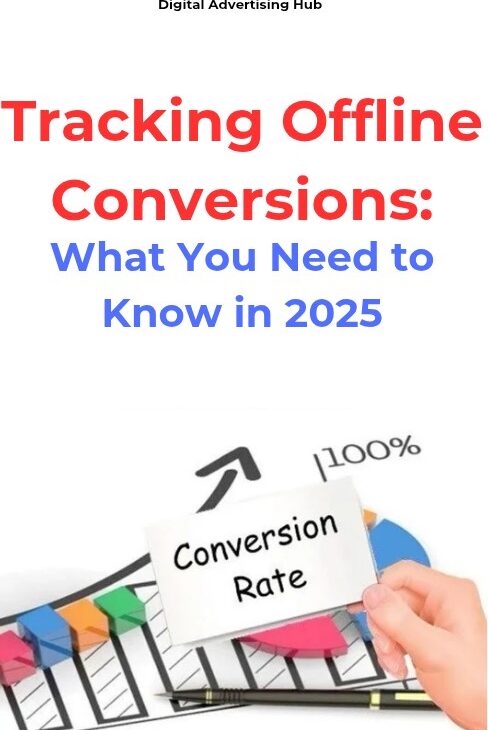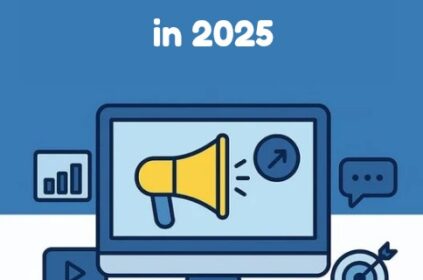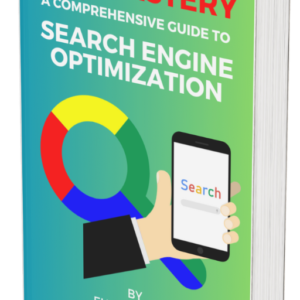In 2025, marketers are facing a new challenge that blends the physical and digital worlds: the need for accurate tracking offline conversion.
As businesses invest heavily in online ads, social campaigns, and paid search, the ultimate measure of success often happens in physical locations—such as in-store purchases, phone orders, or even trade show sign-ups.
Without a clear way to connect these offline actions back to digital ad spend, campaigns risk looking incomplete or ineffective.
Today’s advertising landscape has shifted. While online conversions can be captured easily through pixels and analytics, offline conversions require a more advanced approach.
Companies are now using APIs, customer data integrations, and CRM syncing to capture sales that happen away from the web.
This makes tracking offline conversion a cornerstone of data-driven growth in 2025.
Brands that adopt these methods gain deeper visibility into the true ROI of their marketing.
Instead of only seeing clicks and online form fills, they can attribute in-store sales or phone leads to specific ad campaigns.
With consumer journeys spanning multiple touchpoints, tracking offline conversion is no longer optional—it’s essential to compete.
The Evolution of Offline Conversion Tracking

Back in the early 2010s, digital marketers primarily focused on online tracking through cookies, website analytics, and pixel-based measurement.
Offline data often lived in a silo, leaving advertisers blind to a large portion of their sales funnel.
Fast forward to 2025, and tracking offline conversion has become a central focus, driven by consumer demand for more personalized, omnichannel experiences.
The shift started when platforms like Google Ads and Facebook Ads introduced offline conversion imports.
These allowed businesses to upload sales data from CRMs, matching it with ad clicks to provide attribution insights.
Over time, the process evolved into more automated solutions. Now, APIs like the Google Offline Conversion Tracking system and Meta’s Conversions API allow real-time syncing, closing the gap between digital impressions and physical sales.
By 2025, advancements in AI and big data have made tracking offline conversion even more precise.
For example, call tracking software can now transcribe and analyze customer conversations, connecting sales outcomes directly to campaigns.
Retailers are using point-of-sale integrations to feed transaction data into ad platforms.
The rise of privacy-first solutions has also influenced how data is collected and stored, ensuring compliance while still enabling meaningful attribution.
This evolution shows that offline conversions are not an afterthought—they are an integral part of performance marketing.
Companies that embrace modern tracking offline conversion systems are able to see the bigger picture, making better decisions on budget allocation and strategy.
Key Benefits of Tracking Offline Conversion
The most obvious benefit of tracking offline conversion is gaining a complete view of return on ad spend (ROAS).
If your campaigns are only measured by online form fills or web purchases, you’re missing a significant slice of customer activity.
Offline actions, such as a phone call that leads to a contract or a store visit that results in a purchase, represent valuable revenue that deserves to be tracked.
One major benefit is enhanced attribution. Tracking offline conversion ensures you know which campaigns are driving real revenue, not just clicks.
For industries like automotive, healthcare, and real estate, most of the final purchase decisions still happen offline.
Without tracking, marketers risk underestimating the true performance of their digital efforts.
Another benefit is budget optimization. When you know which campaigns generate both online and offline conversions, you can allocate ad spend more intelligently.
This means scaling up the campaigns that truly deliver bottom-line results and cutting waste from those that only generate empty clicks.
Finally, tracking offline conversion allows businesses to provide personalized customer experiences.
By syncing CRM data with ad platforms, brands can build remarketing lists based on actual sales outcomes.
For example, if a customer buys in-store after clicking a search ad, they can be excluded from future prospecting campaigns and instead nurtured with loyalty-focused ads.
When businesses take tracking offline conversion seriously, they move from guesswork to precision, building a marketing engine that truly reflects real-world results.
Tools and Platforms for Offline Conversion Tracking
In 2025, businesses have more tools than ever to make tracking offline conversion seamless. The major ad platforms have built-in solutions:
#1. Google Ads offers offline conversion tracking through its import feature, allowing advertisers to upload CRM data and match leads or sales to clicks. Its API enables real-time integrations with CRMs like Salesforce and HubSpot.
#2. Meta Ads relies heavily on the Conversions API, which lets businesses send web and offline event data directly from servers to Meta, bypassing browser restrictions and ensuring accuracy.
#3. LinkedIn Ads provides offline conversion tracking for B2B marketers, especially useful for long sales cycles where deals close months after initial engagement.
Beyond ad platforms, third-party tools enhance tracking offline conversion capabilities.
Platforms like CallRail offer advanced call tracking, integrating with CRMs to attribute calls to campaigns.

POS systems such as Square and Shopify POS now sync data directly to ad platforms, ensuring in-store sales are attributed correctly.
Even marketing automation tools like HubSpot and Marketo provide native offline conversion integrations.
The takeaway is clear: tracking offline conversion in 2025 isn’t limited to one method. It requires a mix of native ad platform tools, CRM syncing, and third-party integrations.
Choosing the right stack depends on your industry, customer journey, and sales process.
Common Challenges with Offline Conversion Tracking
While the benefits are clear, tracking offline conversion isn’t without its challenges. The first major issue is data accuracy.
When syncing data from multiple sources—POS systems, call centers, CRMs—errors can easily creep in.
Mismatched customer identifiers, duplicate entries, or missing timestamps can distort attribution.
Another challenge is privacy compliance.
With stricter regulations like GDPR in Europe and CPRA in California, businesses must ensure offline data is collected and shared responsibly.
Tracking offline conversion requires consent management and secure data handling to avoid penalties.
A third challenge lies in integration complexity. Not all businesses have modern CRMs or updated POS systems that integrate smoothly with ad platforms.
Smaller businesses may struggle with the technical setup, relying on manual uploads instead of automated syncing.
This can delay insights and reduce the overall effectiveness of tracking offline conversion.
Finally, there’s the challenge of organizational alignment.
Offline conversions often involve multiple departments—sales teams, customer service, marketing, and IT.
Getting everyone aligned on data sharing and reporting can be difficult, especially in larger organizations.
Despite these hurdles, businesses that commit to overcoming them gain a significant competitive edge.
Tracking offline conversion may not be easy, but the rewards far outweigh the effort.
Best Practices for Effective Offline Conversion Tracking
To get the most out of tracking offline conversion, businesses need to follow best practices that ensure accuracy and efficiency.
The first best practice is to standardize customer data. Using consistent identifiers like email addresses or phone numbers makes it easier to match offline sales with online ad clicks.
This reduces duplication and improves the reliability of reports.
The second is to automate data uploads wherever possible. Manual imports are prone to errors and delays.
APIs, CRM integrations, and middleware platforms streamline the process, ensuring offline conversions are logged in real time.
Another best practice is to test attribution regularly. Run controlled campaigns and verify that offline conversions are being tracked correctly.
For example, track phone leads separately and confirm that they match reported ad performance.
Lastly, businesses should prioritize transparency and compliance.
Make sure your customers understand how their data is used and provide opt-in mechanisms when necessary.
By being transparent, you build trust while still leveraging the power of tracking offline conversion.
By embedding these practices into your operations, you ensure that offline conversion tracking is not just an add-on, but a core part of your marketing analytics strategy.
Industries That Benefit Most from Offline Conversion Tracking
Not every industry relies equally on tracking offline conversion, but some benefit significantly.
#1. Automotive: Car purchases almost always happen offline. Ads may generate test drive bookings or dealership visits, but the final sale occurs in person.
Tracking offline conversion ensures ad dollars are tied to actual vehicle sales.
#2. Healthcare: Many healthcare decisions begin online but conclude offline, such as booking an appointment or calling a clinic.
Tracking offline conversion allows providers to see which ads lead to new patients.
#3. Real Estate: Property transactions involve long cycles with multiple offline touchpoints, from showings to contracts.

By tracking offline conversion, real estate marketers can connect online leads with closed deals.
#4. Retail: Brick-and-mortar stores still thrive in 2025, especially in hybrid models where online ads drive foot traffic.
Integrating POS systems ensures that offline purchases are tracked back to campaigns.
#5. B2B Services: High-ticket B2B sales often involve calls, demos, and contracts signed offline.
Tracking offline conversion provides the attribution needed to prove ROI on LinkedIn or search campaigns.
These industries illustrate why offline conversion tracking has become indispensable. Without it, marketers would be blind to the majority of their revenue streams.
Future Trends in Offline Conversion Tracking
Looking ahead, the future of tracking offline conversion is shaped by three key trends: automation, AI, and privacy-first solutions.
#1. Automation will reduce manual uploads entirely. In 2025, most major ad platforms already rely on real-time APIs.
Over the next few years, expect even tighter integrations where offline sales are automatically attributed without human intervention.
#2. Artificial intelligence will make tracking offline conversion smarter.
Predictive models will fill in attribution gaps, estimating offline conversions where direct data isn’t available.
AI-driven insights will also help optimize campaigns dynamically, based on offline sales data.
#3. Privacy-first measurement will remain a top priority. As regulations expand globally, marketers will rely on aggregated, anonymized data to track offline conversions without exposing personal identifiers.
Solutions like clean rooms, where data is matched securely, will become more mainstream.
The future points to more seamless, accurate, and compliant systems, making tracking offline conversion not just possible, but effortless. Businesses that prepare now will lead the way.
Conclusion
By 2025, tracking offline conversion has moved from being an advanced tactic to a marketing necessity.
With consumer journeys spanning both digital and physical touchpoints, businesses that ignore offline tracking risk underestimating their true ROI.
Through tools like Google Ads, Meta Conversions API, CRM integrations, and POS syncing, marketers now have everything they need to connect real-world sales with digital campaigns.
While challenges around accuracy, privacy, and integration remain, the benefits far outweigh the obstacles.
The brands that win in 2025 will be those that treat tracking offline conversion as a core part of their strategy.
They’ll gain accurate attribution, better budget optimization, and the ability to deliver more personalized customer experiences.
In a world where every marketing dollar is scrutinized, tracking offline conversion isn’t just a competitive advantage—it’s the foundation of sustainable growth.










